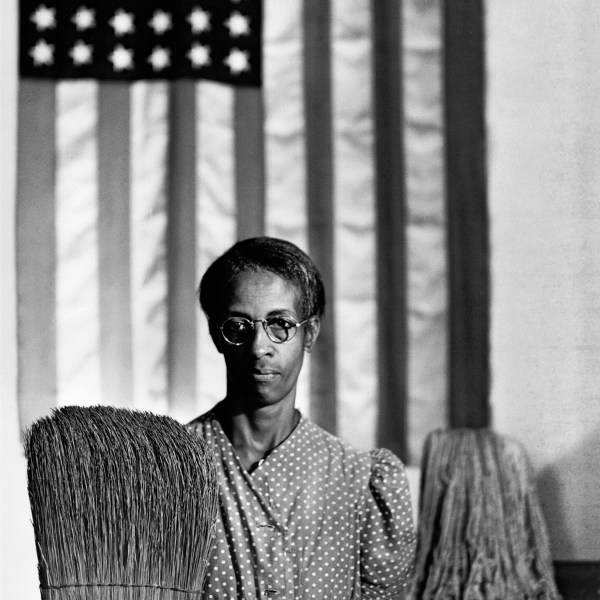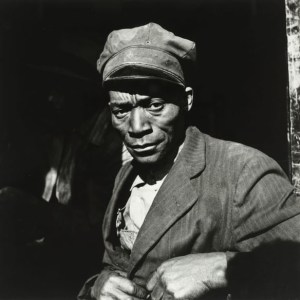


American Gothic, Washington, D.C., 1942
In January 1942, Parks arrived in Washington, D.C., to work for the Farm Security Administration (FSA). He was eager to document the African American community as he had done in Chicago. However, he did not yet realize the challenges he would face as a Black man in the city—which lay on the racial fault line between the nation’s North and South.
Knowing the situation all too well, FSA director Roy Stryker suggested that Parks begin by exploring Washington without his camera. Parks found bigotry everywhere. He was turned away by restaurants, kicked out of theaters, and denied service at a respected department store where he attempted to buy a winter coat. After just a few days, Parks was utterly demoralized. “In this radiant, historic place,” he lamented, “racism was rampant” (Half Past Autumn, 1997).
When a humiliated Parks returned to FSA headquarters, Stryker recommended that he begin his project closer to home. Parks approached a Black woman who was cleaning the FSA offices. Her name was Ella Watson. She told Parks she had become pregnant out of high school, and that her husband had been shot to death two days before their second daughter was born. She was now working to support herself and her two grandchildren.
At the end of their conversation, Parks asked if he could take Watson’s picture. She agreed, and for four months gave him access to her home and her community. The resulting photographs were a breakthrough in Parks’ career. Through Watson, he gained an intimate perspective on the reality of life for Blacks beyond the historical gleam of white Washington, D.C.: crumbling homes, trash-filled neighborhoods, and childhood lessons on the street. He photographed families gathered around meager tables, pensive in their sparsely furnished homes, and attentively negotiating their surroundings in the city. He also took joyous photos of life within the walls of Watson’s church. The church was an invaluable gathering place for Black communities, and Parks captured the “joie de vivre” that rang within it.
Culminating this series is the photograph titled American Gothic, in which Watson poses coolly with a mop and broom in front of the U.S. flag. Among the most famous pictures Parks ever took, it points to the complexity of his mature style. Not only does the photograph connect the intimacy of one person’s life with a national state of affairs, it also engages with a larger history of American images by referring to and reinterpreting Grant Wood’s celebrated 1930 painting of the same name.
